
Just seven miles off the coast of Cape Cod, Martha’s Vineyard island is home to miles of pristine beaches, historic lighthouses, picturesque bike paths, and a diverse population of islanders and summer visitors. Throughout the summer the Vineyard hosts outdoor concerts, weekly farmer’s markets, artisan festivals, and live music events. The highlight is the annual Martha’s Vineyard Agricultural Society Show and Fair in August.
Come visit our enchanting island, relax on our white sand beaches, and explore the many wonders that make a visit to Martha’s Vineyard such a memorable experience.
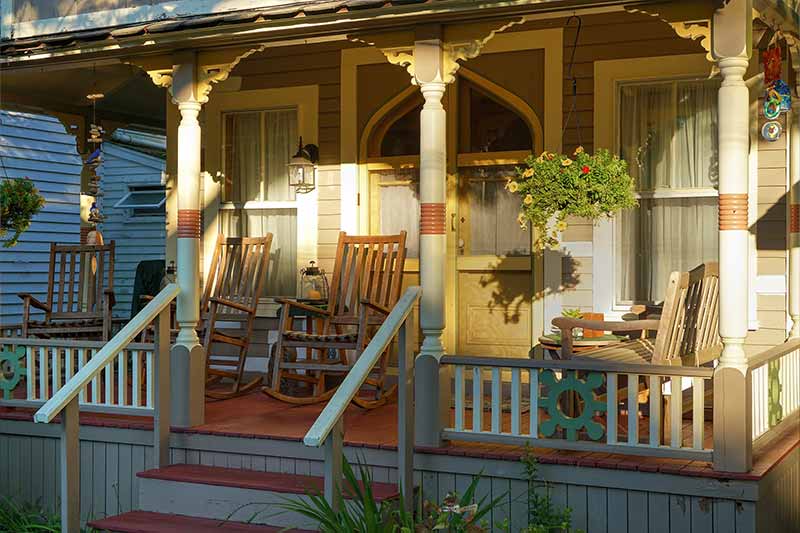
The Town of Oak Bluffs, incorporated in 1907, was once part of Edgartown. Its development as a seasonal community began in 1835 when an Edgartown man, Jeremiah Pease, selected the area of Oak Bluffs to hold a Methodist camp meeting. The idea caught on, and each summer the “Martha’s Vineyard Campmeeting Association” grounds were visited by religious adherents who pitched tents to spend time worshiping and relaxing beneath the oaks. Very soon, the tents were replaced by cottages and, when Oak Bluffs broke away from the town of Edgartown in 1880, it was initially named Cottage Town (until 1907 when it was renamed Oak Bluffs). Residents decorated these cottages with ornate woodwork (often known as Campground Gothic Revival) and, subsequently, they became referred to as the “Gingerbread Cottages.”
Tourists traveling by steamer from the mainland to Oak Bluffs in the early 1900s could choose from a wide range of attractions, including retail shops, restaurants, ice cream parlors, dance halls, band concerts, walks along the seaside promenade, or swimming in the waters of Nantucket Sound. Resort hotels, of which the Wesley House is the sole surviving example, lined the waterfront and the bluffs. For a time, a narrow-gauge railway carried curious travelers from the steamship wharf in Oak Bluffs to Edgartown, running along tracks laid on what is now Joseph Sylvia State Beach. In 1884, the Flying Horses Carousel was brought to Oak Bluffs from Coney Island and was installed a few blocks inland from the ocean, where it remains in operation today. Built-in 1876, it is the oldest platform carousel still in operation in the US. The grounds and buildings of the Campmeeting Association, as well as the Flying Horses Carousel, have been designated National Historic Landmarks by the US Secretary of the Interior.

Today, Oak Bluffs and Tisbury are the two towns where ferries dock on Martha’s Vineyard. Ferries arrive from Woods Hole, Falmouth, New Bedford, and Hyannis Massachusetts, as well as from New York City. Oak Bluffs is a town known for its laid back attitude and diverse community, welcoming visitors from across New England and around the world.
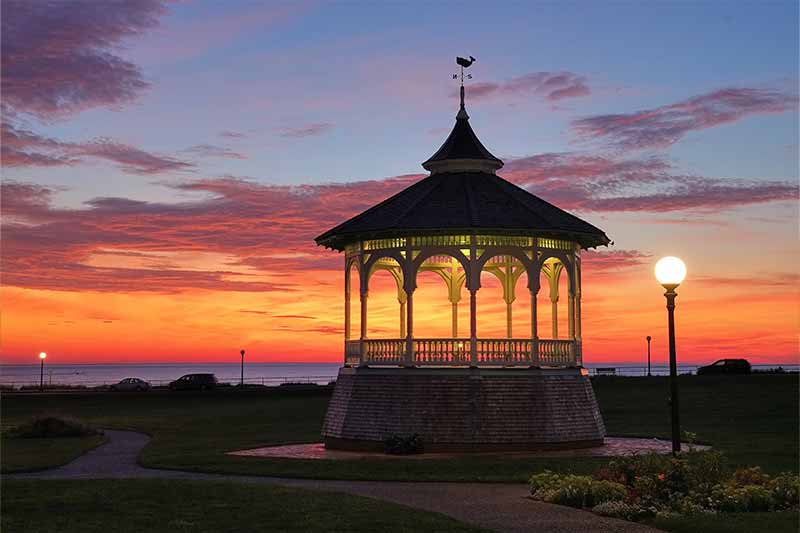
During the summer months the Campgrounds and Ocean Park, in particular, host a multitude of activities and summer events, including the annual fireworks display, weekly band concerts, the jazz fest, Tivoli Day, and the penultimate summertime celebration called “The Grand Illumination”, held in late August at the Tabernacle in the Campgrounds. On Illumination Night, which was originally a celebration of the end of the “camp meeting,” residents of the Campgrounds hang ornate lighted Chinese lanterns (mostly electric, but some still lit by candle) from the porch eaves of their cottages. The lanterns remain dark until around 9:00 p.m., at which time the citizenry gather at the Tabernacle for a sing-along and speeches and proclamations by local officials. At the appointed moment the street lights go dark and hundreds of Chinese lanterns illuminate en masse in a brilliant explosion of colorful light throughout the Campgrounds, accompanied by the thunderous cheers of those in attendance. Visitors wander through the labyrinth of small lanes and footpaths of the Campgrounds, enjoying the sights and festivity of this truly one of a kind celebration.
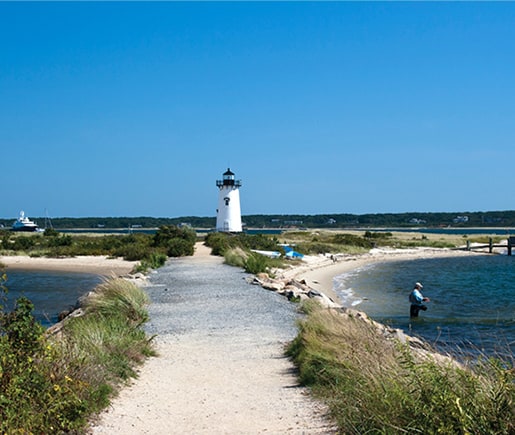
The Town of Edgartown was Martha’s Vineyard’s first colonial settlement and the center for whaling and fishing activities, reaching its peak between 1820 and 1865. Wealthy whaling captains built extraordinary houses in the Greek Revival tradition along the waterfront, many of which still reside in their original condition along Water Street today. As the whaling industry started to decline, Martha’s Vineyard’s popularity as a summer resort began.
Today, Edgartown has an established historical commission that protects the architecture of their seaside community and fosters the aesthetics of the quintessential New England community. Downtown is a hub of fabulous restaurants, retail stores, and harbor activities. South Beach, Chappaquiddick and the Edgartown Lighthouse are some attractions that can’t be missed while visiting this charming village.
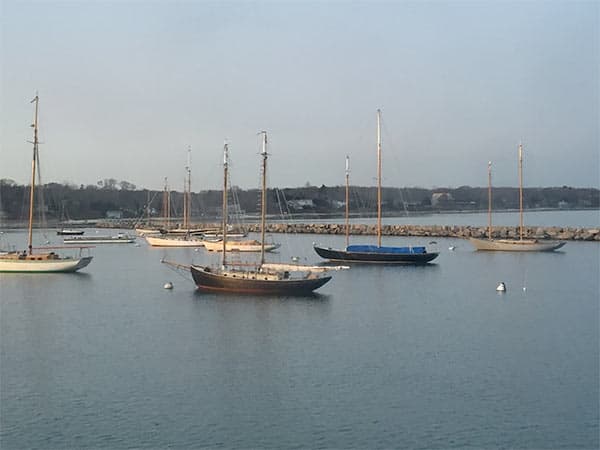
The Town of Vineyard Haven, known early on as Holmes Hole, is the island’s second-oldest town, incorporated in 1671 as Tisbury. It’s excellent harbor made it an important port town where the wares of the Vineyard could be readily shipped off-island. Ocean-going traffic was so busy in the area that the Nantucket and Vineyard Sounds were second only to the English Channel for the number of vessels passing through. Ocean traffic and trade played a vital role in the town’s development, as countless Vineyarders served as sailors and fishermen on local and foreign vessels, and Vineyarders of every stripe supported the many vessels that called on Vineyard Haven and Oak Bluffs harbors.
Today, Vineyard Haven maintains its status as an important east coast port, renowned for a thriving wooden boat building community, as well as providing a vital year-round harbor which connects the island to the mainland and the rest of the world beyond.
“Up-Island” Towns (meaning upward in longitude, not elevation) include the towns of West Tisbury, Chilmark, and Aquinnah.

WEST TISBURY has historically been the heart of the agricultural community on Martha’s Vineyard, and it maintains that rustic personality today. Formerly part of the town of Tisbury (Vineyard Haven), West Tisbury broke away as a separate town in 1892. While driving through the winding roads of West Tisbury be sure to stop by Polly Hill Arboretum, Cedar Tree Neck Nature Preserve, The Field Gallery and don’t miss the weekly farmers and artisan markets in the summer months located at the town hall.
CHILMARK citizens traditionally earned their living from products of both land and sea. The town was founded in 1694 and maintains a pastoral feel with many open pastures dotted with sheep and horses. Many of the properties are lined with stone walls that were originally built by the Native Americans in the area. All roads lead to Chilmark, so spend some time stopping by the farm stands for flowers, dairy or produce, or cruising down to the fishing village of Menemsha to grab some fresh seafood from Larsen’s fish market and watch the sunset into the Atlantic Ocean.
AQUINNAH, famous for its clay cliffs, is a geological wonder, and a fingerprint of the last ice age. Aquinnah became an independent town in 1870; at the time the area was an early Native American settlement. Today, Aquinnah is home to more than 100 members of the Wampanoag Tribe. The view of the cliffs on a clear day is incredible and with a cup of chowder from Faith’s Seafood Shack in hand, the view only improves. If you have time, walk down the sandy path to the pristine beach and spend the day along the shore looking for sea glass.
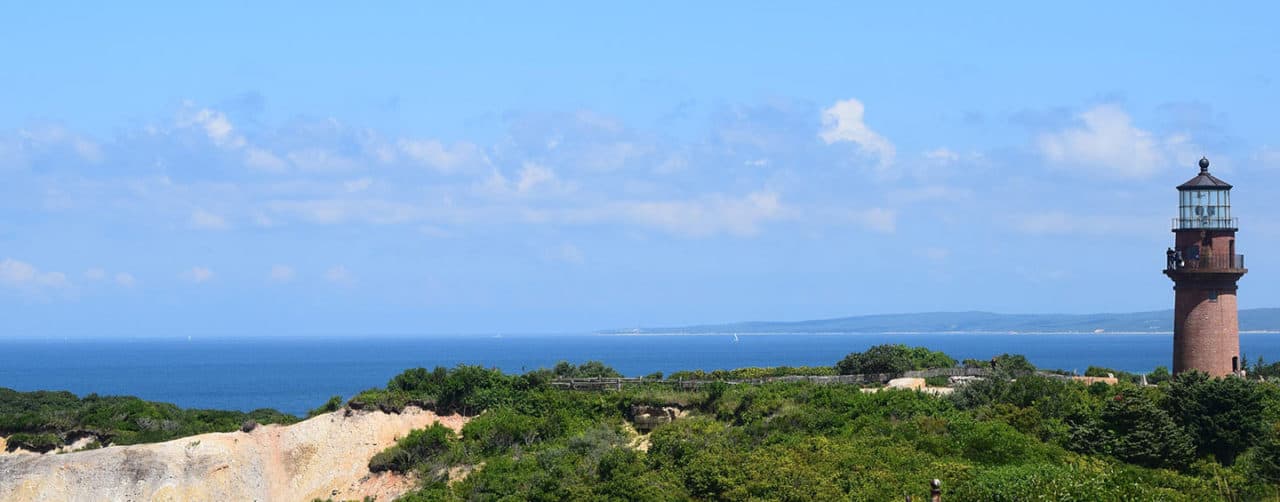
Where are all the grapes? Martha’s Vineyard is a glacial moraine, created approximately 20,000 years ago, near the end of the Quaternary glacial epochs, when the Laurentide ice sheet deposited the boulders, gravel, and sand that it carried along on its slow journey southward from Canada. As the ice sheet receded, the southernmost deposits became the islands of Nantucket and Martha’s Vineyard. The oceans began to rise with the melting ice, thus forming Nantucket Sound and the peninsula to the north known as Cape Cod. As the climate warmed, American Indians began to migrate to the island, settling here more than 5,000 years ago. Martha’s Vineyard was originally known by the Wampanoag Indians in their language as Noepe, or “land amid the streams.”
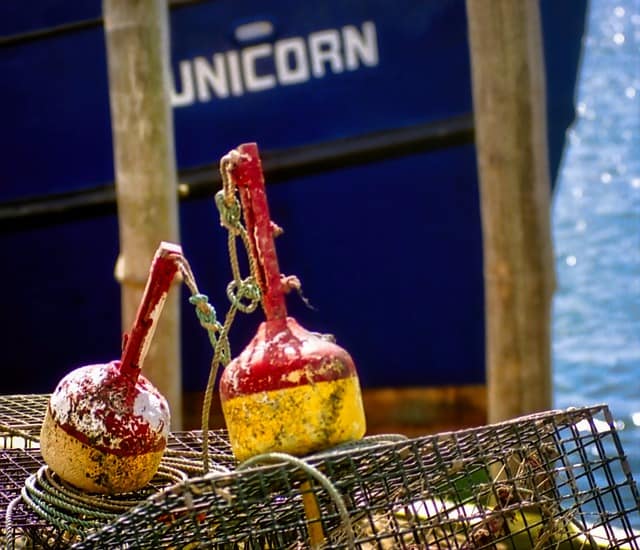
In March 1602, English explorer and privateer Bartholomew Gosnold set off in his vessel Concord across the Atlantic to arrive months later along the coast of Maine. As he traveled farther south he came upon Cape Cod and, on May 22 of that year, he arrived at Martha’s Vineyard. He found the island quite large, well wooded, and with a profusion of wild grapes; thus, he called it Martha’s Vineyard after his daughter Martha, who passed away in infancy.
A non-Wampanoag settlement started in Edgartown, with people making a living through farming and fishing. Later, as the whaling industry took hold during the early 19th century, more than 100 whaling captains called the island their home. You can still see many of the stately properties built during this prosperous time along North Water Street in Edgartown. Note the “widow’s walk” atop many of the homes, and imagine, as folklore has it, the captains’ wives staring out to sea, awaiting the return of their loved ones.
Oh, and where are all the grapes? Well, they’re out there, but growing wildly and unmanaged in countless back yards, fields and woods throughout the island. The last actual vineyard on Martha’s Vineyard ceased operations in 2008.


